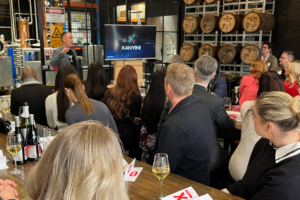Showcase SA member RiskLogic’s Principal Consultant, Dr Rebecca Hoile has penned an insightful piece outlining business and personnel impacts during the major global event we are currently living through. Read it here:
Some say we must look back to look forward. Certainly, after every crisis or major event, we analyse and assess our preparedness and response, and seek to move forward with the clarity and focus that comes from hindsight.
For many, 2020 was the catalyst for change, embracing digital technologies, new resources, a flexible workforce, accelerated by the public health and social measures placed on our community including the need for physical distancing and infection control.
Yet, it was a year that highlighted the gaps and vulnerabilities in business resilience as we struggled with a long-term multi-faceted crisis, supply chain disruptions, trade and travel restrictions, economic downturn, and loss of key personnel.
Today, our understanding and perspective on what we need to build and maintain business resilience is clearer, yet it requires action early to ensure we are well placed for the challenges of 2021.
Top 3 Priorities for 2021
1) Understanding your Risk / Threat Environment.
The COVID-19 pandemic continues to sore across the globe, with many countries experiencing the greatest number of daily cases, deaths and hospitalisations since the pandemic began. The risk to human health is high, even with the distribution of a vaccine, the need to manage transmission, will continue to see strict infection control practices for much of the year.
As businesses embraced digital technologies, we saw an increase in cyber security threats. Many businesses and large corporations targeted by malware and ransom attacks resulting in data breaches and loss of ICT systems, a risk that is only increasing.
The cascading consequences of this pandemic have resulted in economic instability and downturns globally. Geopolitical tensions and changes to consumer demands and habits coupled with loss of supply chains, have all impacted our usual business strategies. In addition, we have experienced extreme weather events, leading to business closures and operational delays due to smoke, fire, flooding and loss of essential power.
As we move into 2021 the World Meteorological Organisation warns, extreme weather threats will be heightened by the impacts of La Niña. Predicted to increase flooding and tornados, with potential agricultural losses, leading to food insecurity in many already struggling countries.
Re-evaluate your risk profile and tolerances in the current risk climate.
Now is the time to review the risk and threat environment that surrounds your business and your network, understanding that risks and threats overlap. Review your risk tolerances and potential control strategies with a deeper appreciation of potential impact.
2) Reviewing your Crisis Management Capabilities.
Last year demonstrated the need for and importance of crisis management plans. While the pandemic was a crisis unlike any other, in speed, complexity and duration, businesses and organisations that activated a crisis plan proved stronger. Those with a clear structure of leadership and communication, decision making tools and described responsibilities, were better placed to deal with the ebb and flow of this enduring crisis.
The experience of last year has demonstrated the need for improved crisis leadership. For leadership to be effective, we need a plan of action. What happens in the first hour dictates what will happen over the next 3 hours, and so forth, and to practice the plan. Crises today can be overlapping; recovering from one, when hit by another, or concurrent, leading to fatigue and reduced capability to manage actions and identify vulnerabilities.
Hindsight has provided a deeper understanding and appreciation of human resilience within a crisis team.
Decision making under pressure and endurance were recognised as key factors in successfully negotiating a crisis of this intensity and uncertainty.
Building team resilience needs to be included in our business resilience framework for the coming year. Training and exercising leadership and response teams through a variety of scenarios is paramount to success. Building confidence and capability across multiple layers of the organisation.
3) Strengthening Business Continuity.
The new year brings new innovations, service processes and functions, that have been born from necessity, as many adapted business models and strategies to meet changing customer and clients demands, and environmental constraints.
Effective business continuity requires regular review of critical business processes, many of which may have evolved or been influenced by the technologies we have adopted, changing policies and procedures and hybrid workplace.
It is time to review your business resilience maturity, which seeks to improve your ability to prosper in a dynamic interconnected world.
The experience we take from the past is only valuable in the future if it is applied. The ability to continue to deliver your critical services and functions requires a robust and elastic framework, one that is embedded in a level of competence and capability across all aspects of your organisation.
For further information on RiskLogic’s insights, click here.




